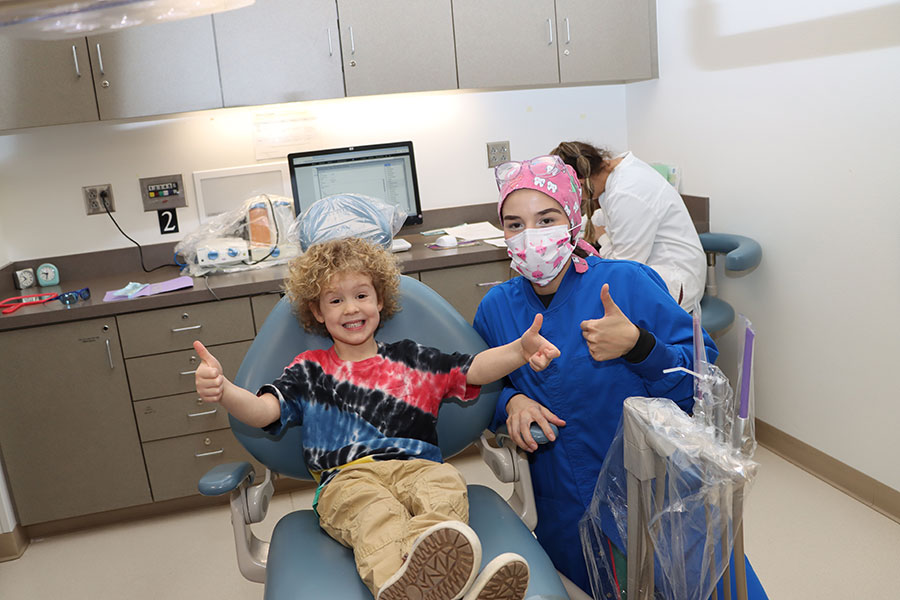Read San Juan College's guide to learn how certified medical billers and coders enjoy a promising healthcare career with growth potential. Explore now.

The healthcare industry relies on skilled billers and coders to ensure medical services are properly documented, communicated, and paid for. Medical billing and coding specialists work behind the scenes as the bridge between healthcare providers, patients, and insurance companies.
If you’re considering a career in healthcare without direct patient care responsibilities, the medical billing and coding field offers the satisfaction of contributing to the health and medical system and the foundation for career growth.
Defining Medical Billing and Coding
Medical coding involves converting diagnoses, procedures, medical services, and equipment into standardized codes. These codes establish a consistent language for communication between healthcare providers and insurance companies, helping to evaluate the extent to which health insurance covers costs.
Medical coders review patient records and assign the correct codes for each diagnosis and procedure. Their main responsibilities include:
- Reviewing medical documentation
- Assigning accurate codes for diagnoses, procedures, and services
- Submitting claims to insurance companies
- Following coding guidelines and regulations
- Consulting with healthcare providers for clarification
Medical Coding Process
Medical coders’ responsibilities in the medical billing cycle typically include:
- Patient registration and insurance verification
- Preparation and submission of claims to insurance companies
- Managing payment processing when reimbursement is received
- Follow-up on denied or partially paid claims
- Patient billing for remaining balances
Key Medical Coding Systems
Medical billers and coders undergo on-the-job training or, often, complete a certificate or degree program to use coding systems in healthcare settings. Understanding these systems ensures that healthcare providers receive payment for caring for their patients, no matter the situation.
- ICD-10-CM: Used for diagnostic coding (documenting why a patient received care)
- CPT: Used for procedures and services performed by healthcare providers
- HCPCS: Used for procedures, supplies, and services not covered by CPT codes, particularly for Medicare and Medicaid claims
Is Medical Coding a Good Career?
The medical coding field offers numerous advantages, making it an attractive career option for many professionals looking to enter the healthcare industry.
Job Stability and Growth
The healthcare sector is consistently growing, leading to a strong need for skilled professionals adept in record-keeping and insurance. Employment opportunities for medical records specialists, such as medical coders, are expected to increase at a rate surpassing the average for all jobs through 2033, offering great job security (Bureau of Labor Statistics).
Flexible Work Environment
Medical coders can work in various settings, including:
- Hospitals
- Insurance companies
- Outpatient clinics
- Physician offices
- Remote work opportunities
In recent years, numerous work-from-home medical coding job opportunities have become available, enabling medical billers to achieve a flexible work-life balance once they've gained experience.
Career Advancement Opportunities
With a foundation in the medical and healthcare industry, along with relevant experience and additional certifications, medical coders can advance to positions such as:
- Billing coordinator
- Coding supervisor
- Compliance officer
- Health information manager
- Reimbursement specialist
Competitive Pay
Entry-level salaries in medical coding and health information vary by location, applicant experience, employer size, and other factors. The BLS reports that the median annual wage for medical records specialists in 2024 was $50,250. As experience provides opportunities for growth in responsibility and skill, the highest salaries reported in these roles exceed $80,950 annually.
Major Certification Organizations
Several organizations offer recognized medical coding certifications:
- American Academy of Professional Coders (AAPC): Offers certification for Certified Professional Coder (CPC), Certified Professional Biller (CPB), and dual CPC/CPB credentials
- American Health Information Management Association (AHIMA): Offers credentialing for Certified Coding Associate, Specialist, and Physician-based Specialist
- National Healthcare Organization (NHA): Offers the Certified Billing and Coding Specialist (CBCS) credential
Entry-Level Certifications
To break into the career, aspiring medical billers and coders earn an initial certification to master the fundamental coding systems and techniques. Common medical billing and coding certification options include:
- Certified Professional Coder (CPC)
- Certified Coding Associate (CCA)
- Certified Billing and Coding Specialist (CBCS)
Specialized Certifications
As you progress in your career, find areas of the field you’re most interested in, or want to pursue job opportunities in specific settings, certifications are available for:
- Certified Professional Coder-Hospital (CPC-H)
- Certified Coding Specialist (CCS)
- Certified Outpatient Coder (COC)
Medical billing and coding is just one of many healthcare certification options for starting in the field. Check out our entry-level healthcare certification guide to explore paths that may fit your interests and goals.
Education and Training for Billing and Coding Roles
Enrolling in an education or training program to become certified as a medical biller or coder can set you apart in your job search and qualify you for potentially higher salaries than those of uncertified applicants. These programs are commonly available in person or online at community colleges and universities.
- Certificate Programs: 4-12 months, focusing on foundational coding and billing skills
- Diploma Programs: 12-15 months, offering more thorough or specialized training
- Associate’s Degrees: Two-year programs providing broader healthcare knowledge and general education
Certificate vs. Associate Degree: Which Path?
Both certificates and associate’s degree programs related to medical coding will have a core curriculum of medical terminology, healthcare regulations and compliance, medical coding systems, electronic health records, and insurance and payment methods.
You may choose between a shorter certificate program and a longer associate’s degree, depending on your needs. Both paths can lead to successful careers, but they offer different advantages.
- Certificate programs provide quicker entry and targeted skills, which is best for those who want to begin working promptly. Although certificates may allow you to start working sooner, they offer less training and fewer advancement opportunities without further education.
- Associate’s degrees provide broader healthcare knowledge and potential for advancement in exchange for a slightly longer time commitment, usually two years. Additionally, you may earn higher salaries with an associate’s degree. An associate's degree is a cost-effective first step if you plan to pursue a bachelor’s degree.
The Future of Medical Billing and Coding
The field of medical billing and coding is changing quickly, with several key trends that will shape careers in this field. Understanding these developments can help you position yourself for higher earnings and greater job security.
Technology Changing the Field
- AI-Assisted Coding: Computer tools are helping (not replacing) human coders. The two main types are systems that help code structured scenarios and systems that understand clinical documentation. These tools help reduce the workload rather than eliminate jobs.
- Blockchain for Healthcare Billing: Emerging secure transaction systems reduce fraud and ensure data integrity between providers, payers, and patients. This creates new opportunities for medical coders with blockchain knowledge.
- Mobile Insurance Verification Tools: Insurance eligibility checking is becoming more accessible through mobile apps, creating smoother claim workflows.
High-Paying Specializations to Consider
Medical coding salaries vary significantly based on specialization. Certifications or experience in specialized areas can lead to you working in departments ranging from radiology to surgery, including inpatient and outpatient settings. These specialty areas may command higher pay:
- Surgical Coding: Certified General Surgery Coders specializing in operating room procedures may earn more than general coders.
- Orthopedic Coding: These specialists typically start in general practice before moving to orthopedic offices, where they can earn higher salaries due to their specialized knowledge.
- Compliance and Auditing: Coding compliance specialists who enforce regulations and conduct audits can increase their earning potential while taking on more managerial responsibilities.
- Telehealth and Remote Patient Monitoring Coding: These growing areas require expertise in telehealth-specific codes and understanding the billing complexities of asynchronous monitoring, diagnosis, and treatment.
Explore Health Information Technology at San Juan College
San Juan College offers an online Associate of Applied Science (AAS) in Health Information Technology degree that can prepare you for a dynamic medical billing and coding career and equip you to pursue roles in any healthcare field or setting you’re passionate about.
Our online program provides the flexibility to prepare for industry certification exams and gain the practical skills that employers value in medical billing and healthcare information systems and administration.
Begin Your Medical Billing and Coding Career Journey
Whether you’re considering a career change or looking to enter healthcare, medical billing and coding jobs provide accessible entry points with strong job growth potential. By getting proper education and certification, you can position yourself for success in this essential healthcare administration specialty.
Ready to explore your options for medical billing and other healthcare careers? San Juan College is here to help you take the next step.



